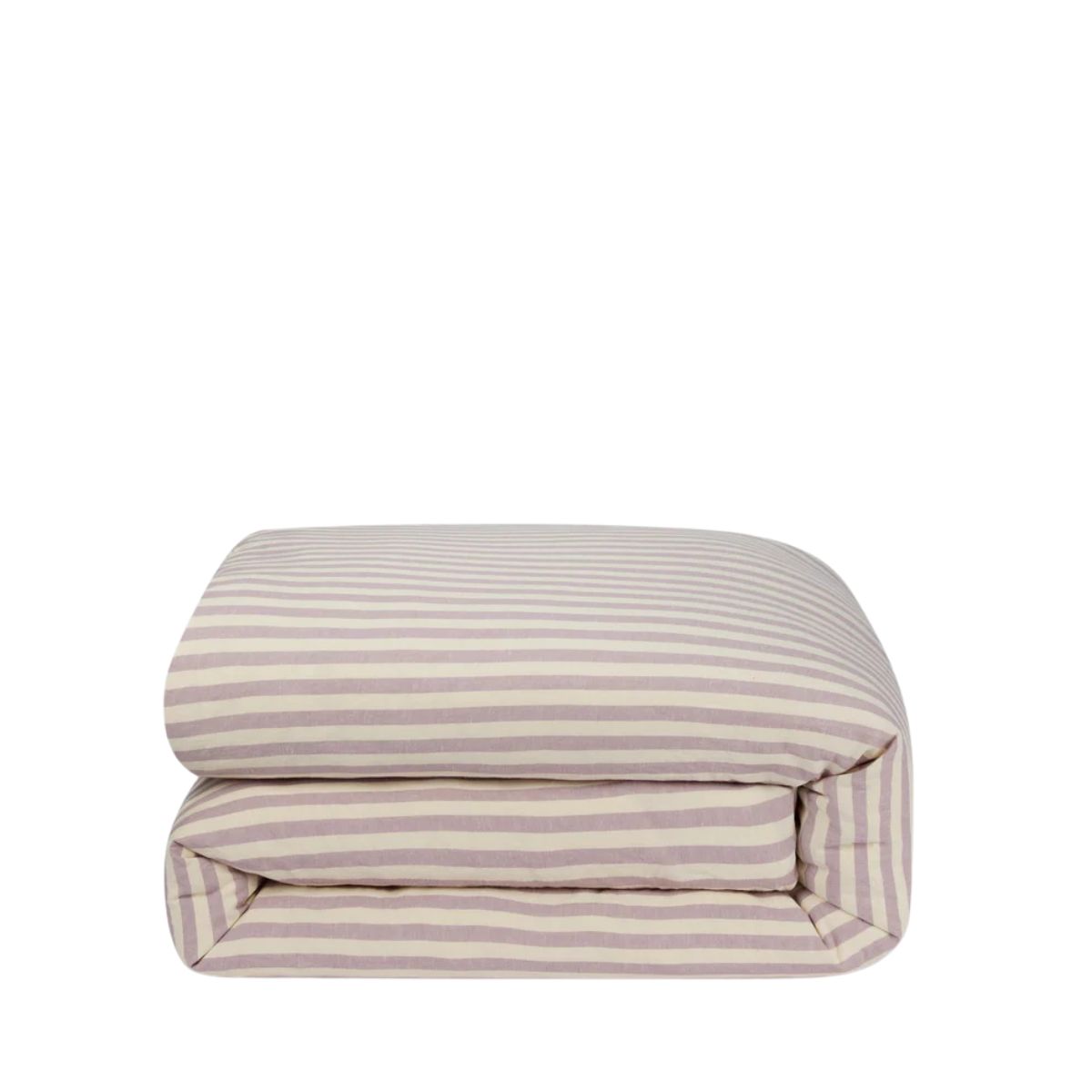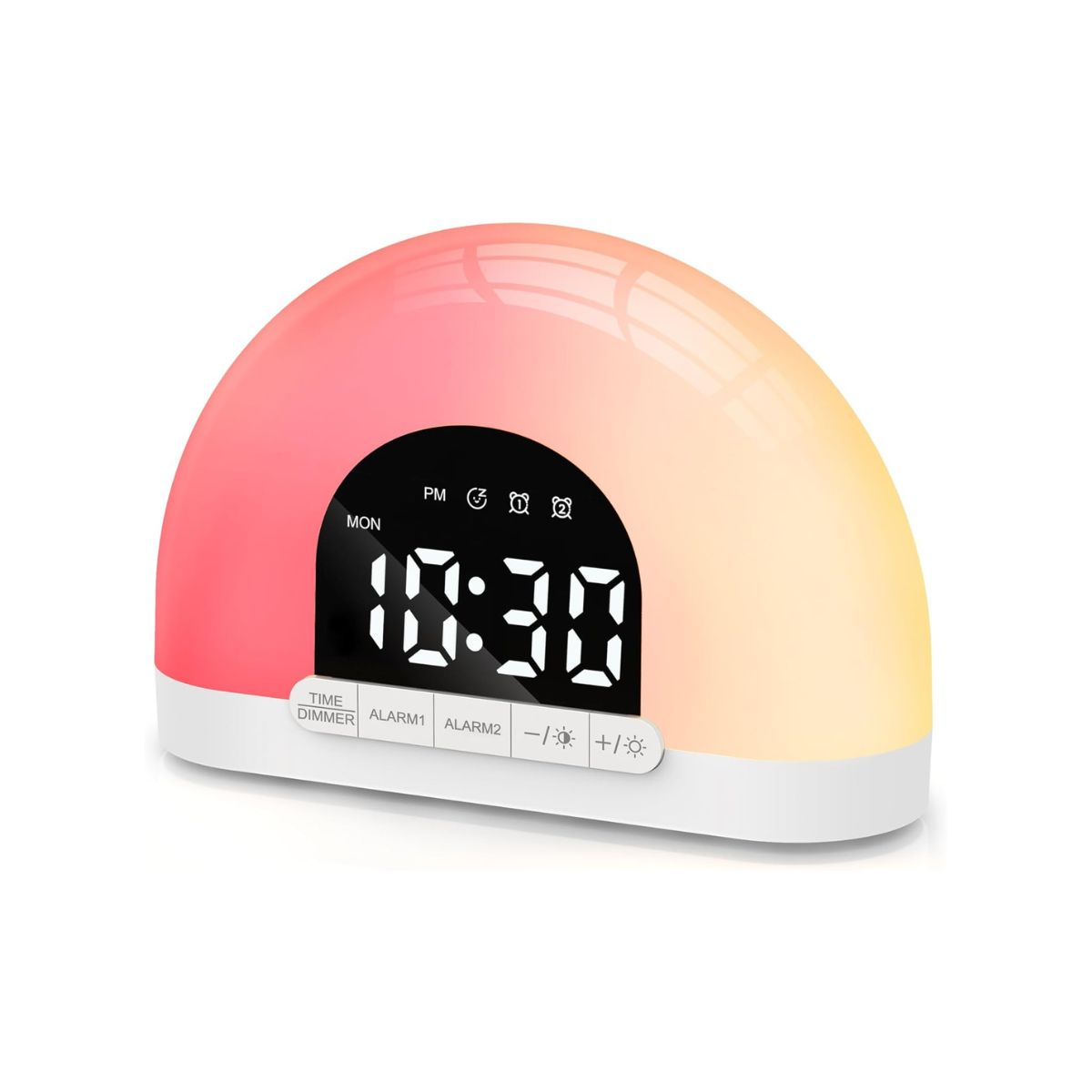I Tried TikTok's New Guided Meditations - But After a Week Of Trialling, I'm On The Fence
Could the platform designed to keep us scrolling really help us to relax?
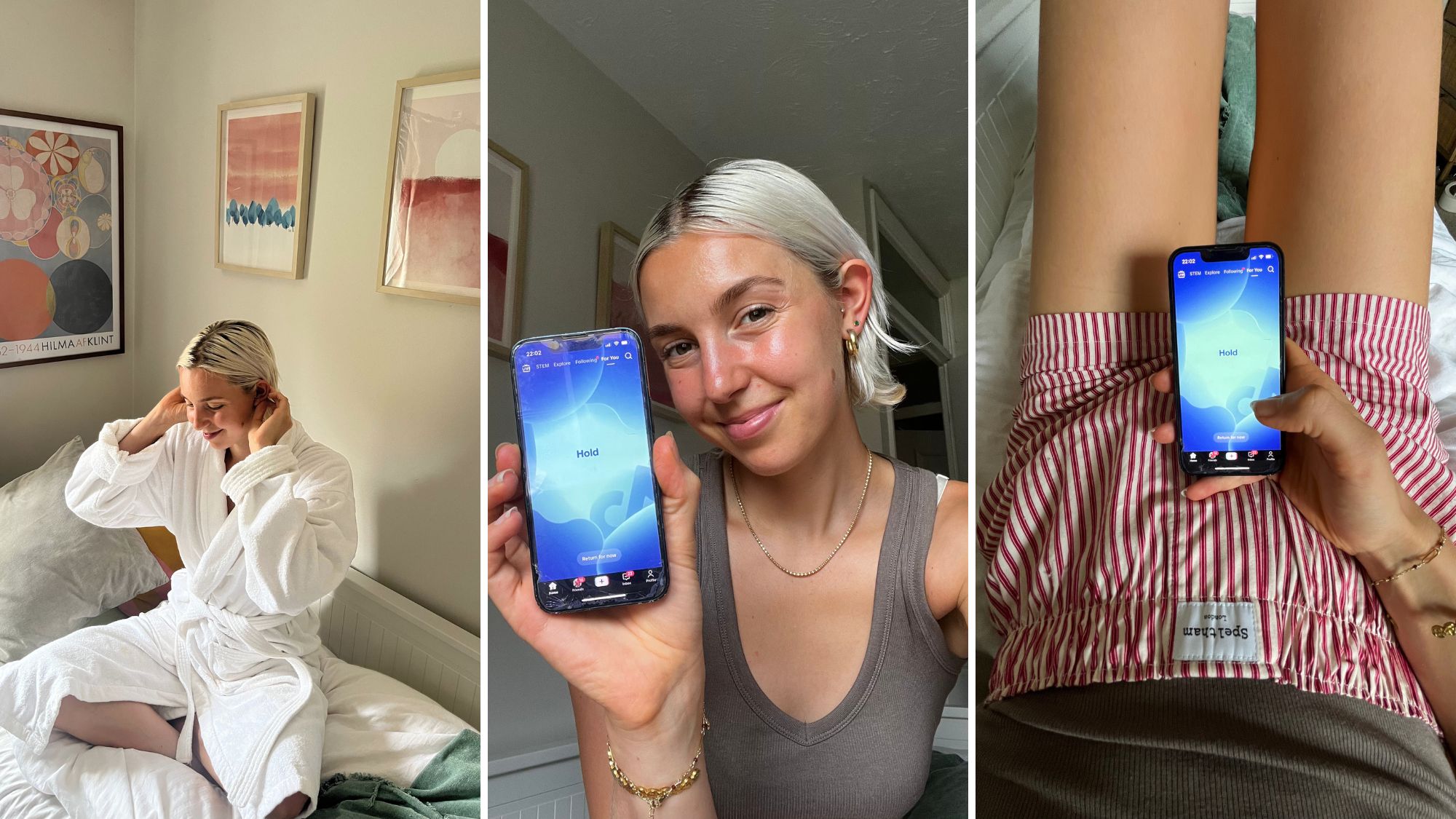

Did you ever expect to hear the words TikTok and mediation in the same sentence? No, nor did we. And if you’ve ever found yourself in a late-night scroll spiral, you’ll know that social media rarely leaves you feeling zen. More often than not, it does the opposite, sending your brain into overdrive when you should be winding down.
But with increasing pressure on Big Tech companies to take responsibility for users’ mental health, TikTok has introduced guided meditation sessions as part of its sleep settings.
As someone who’s no stranger to a bedtime scroll, I’m acutely aware of how that extra screen time impacts my sleep. I’ve historically been a great sleeper, and will usually have nodded off within minutes of my head hitting the pillow. But since social media (and specifically TikTok) has become part of my evening routine, I find that the time between switching off and falling asleep has become longer and longer.
I’ve experimented with plenty of screen hygiene habits (you know the ones: putting my phone in a different room, setting screen time limits, playing white noise as I fall asleep), and can confirm, they do work. I wake up clearer, more refreshed, creative and energised. But despite the good effects, I’ll often find that my phone creeps back into my room for one reason or another, and before I know it, my screen boundaries have been erased by the pull of the algorithm.
You probably don’t need me to tell you that the science backs this up, with numerous studies finding associations between late-night scrolling and reduced sleep duration, with one study even finding that every additional hour of screen time reduces sleep by 24 minutes, whilst increasing your risk of insomnia by 63%.
It’s this innate contradiction between social media and sleep which made me so curious about the platform’s new guided meditations. Could the platform directly responsible for so much of our digital overstimulation really be helping us to unwind? Or is this simply a case of health-washing by TikTok? Read on for my honest thoughts after trialling the feature every night for a week.
And if you're looking to upgrade your own bedtime routine, don't miss our guides to sleepmaxxing , how to improve your sleep, and sleep meditation, while you're at it.
Celebrity news, beauty, fashion advice, and fascinating features, delivered straight to your inbox!
TikTok has introduced guided meditations to help us switch off - so I tried them for a week
What are guided meditations?
Meditation tends to be a bit like Marmite: you’re either all in, raving about how it’s changed your life, or you’re in the “I just can’t get into that” camp, feeling like your mind is too busy or your living room is too loud. I’ll admit, I’ve definitely hovered in the latter group, convinced that meditating just wasn’t for me because I couldn’t switch off on demand.
But guided meditations promise a different approach, one which doesn’t just ask you to sit in silence and magically empty your mind.
“A guided meditation is a practice where a voice, either live or recorded, leads you through a journey intended to bring you into a more present, relaxed, or focused state,” explains breathwork coach Steph Cabrera. “This could include breath awareness, visualisations, body scans, affirmations, or gentle instruction to help quiet the mind and soften the body.”
What are the benefits of guided meditations?
So far, so good. But what are we actually trying to gain out of a meditation practice, and what makes the guided kind, in particular, so well regarded?
“Guided meditation is a powerful tool for people who find silence intimidating or distracting at first,” explains Cabrera, adding that the external voice is “incredibly supportive, especially for those new to mindfulness, because it keeps your mind anchored when it has a tendency to start to wander. Guided meditation can help reduce anxiety, support better sleep, regulate the nervous system, and create a sense of emotional grounding.”
Meditation and Breathwork Facilitator, Jenny Haynes, agrees, adding that “having someone talk you through the steps can really help allow you to be present in the moment, rather than worrying about how long to sit there for, or if you're doing something 'right'.”
Are TikTok’s guided meditations actually effective?
So, now to TikTok’s meditative offering. It’s currently an automatic feature for under-18s on the app, but if you’re an adult user, you’ll have to manually opt in by switching on “sleep hours” in the app’s settings. The idea is simple: once it hits your set bedtime, defaulted to 10 pm, though you can tweak it, TikTok will interrupt your feed with a full-screen meditation prompt, guiding you through a short breathwork exercise.
The platform has been testing the new feature on a pool of teenage users for the last few months, and claims 98% of teenagers kept the meditation experience switched on. But despite the strong statistics, I remained sceptical about how effective these meditations actually are in helping us to switch off. Isn’t this just another feature designed to increase app engagement?
“It could be,” says Cabrera, “but let’s be honest; people are on the app already. If this becomes a soft entry point for someone to explore meditation for the first time, then that’s a win. It might just plant a seed, especially if someone’s been scrolling endlessly, serving as a nudge to come back to the body and check in.”
That said, Cabrera still has her hesitations. “TikTok is still a highly stimulating environment. There’s a chance the meditation could feel superficial or rushed, especially if users know they can skip it. She points out that the onus is still very much on the user’s willingness to pause, and reminds that, regardless of the content, “screen exposure right before bed can disrupt melatonin production, so there's an inherent conflict between the platform and the goal of deep rest.”
Who are TikTok’s guided meditations best for?
As you might guess, this probably isn’t the go-to practice for someone who already has a well-worn meditation cushion and a Headspace subscription. But, as Cabrera points out, with over 1.9 billion users on TikTok, the potential to reach people who’ve never even considered trying mindfulness before is considerable.
“TikTok’s meditation could work well for those who are curious about meditation, but who aren’t ready to download a separate mindfulness app or commit to a longer practice,” she explains. “It’s a low-barrier way to introduce the concept of self-regulation and awareness.”
What are the drawbacks of TikTok’s guided meditations?
Of course, for all its accessibility, TikTok isn’t exactly the ideal setting for inner peace - a problem Haynes is keen to flag. “The very fact that you're having to enter an app that's designed to be stimulating and addictive can take your brain into a more fast-paced state, and makes it easier to succumb to scrolling after meditation, which could reduce some of the benefits of the practice.”
She also notes that effective guided meditation should help us “relax and drop into a focused state, without complex jargon or instructions to follow,” which leaves TikTok’s on-screen prompts somewhat lacking. Though short and accessible, they’re abrupt and solely visual, reminding me more of a pop-up ad than a true meditation practice.
The good news is that there are plenty of alternative solutions to deepen your practice if you’re looking for more from your meditation. “Insight Timer is a great app dedicated solely to meditation and breathwork. There are thousands of practitioners to explore from, along with tools to help you build a practice routine.” She also suggests Headspace or even browsing Spotify or YouTube, both of which host a wealth of free meditative content for different needs and attention spans.
I used TikTok's new guided meditations every night for a week - my honest take
Days one to three
When night one of my TikTok trial rolls around, the first hurdle is figuring out how to turn the guided meditations on. After ten minutes of clicking through every setting in the app, I cave and Google it. It turns out that I need to turn on sleep hours, a button found in the screen time section of my settings.
You can select the exact time your sleep reminder kicks in, and as a notorious early bird, I opt for 9.26 pm (don’t ask - I’ve always hated round numbers). TikTok then automatically sets your wake-up time to eight hours later, presumably because this is the generally accepted recommended sleep duration per night, though research shows that, in reality, optimal sleep duration is far more individualised and there is no magic number.
There’s no mention of guided meditation at this stage, so was this not a deliberate trial? I’d have no idea how the sleep hours would affect my user experience. But come 9.15 pm, and in eager anticipation, I hop onto the app for my nightly scroll.
Right on cue, a blue screen of moving bubbles disrupts my feed, prompting me to “unwind with a breathing exercise for a good night’s sleep.” I turn up the volume, expecting a soothing voice to guide me through the practice. I close my eyes... and wait.
Nothing.
I crack one eye open to see simple on-screen instructions: “Breathe in.”
That’s it. No music, no voiceover, nothing to really ease you into a relaxed state. It’s at this point that I realise quite how underwhelming TikTok’s new meditations actually are. Less guided meditation and more DIY breathing prompts, I’m particularly struck by the irony of staring at a bright blue screen (the very thing that any expert will tell you to avoid) whilst attempting to follow a voiceless meditation.
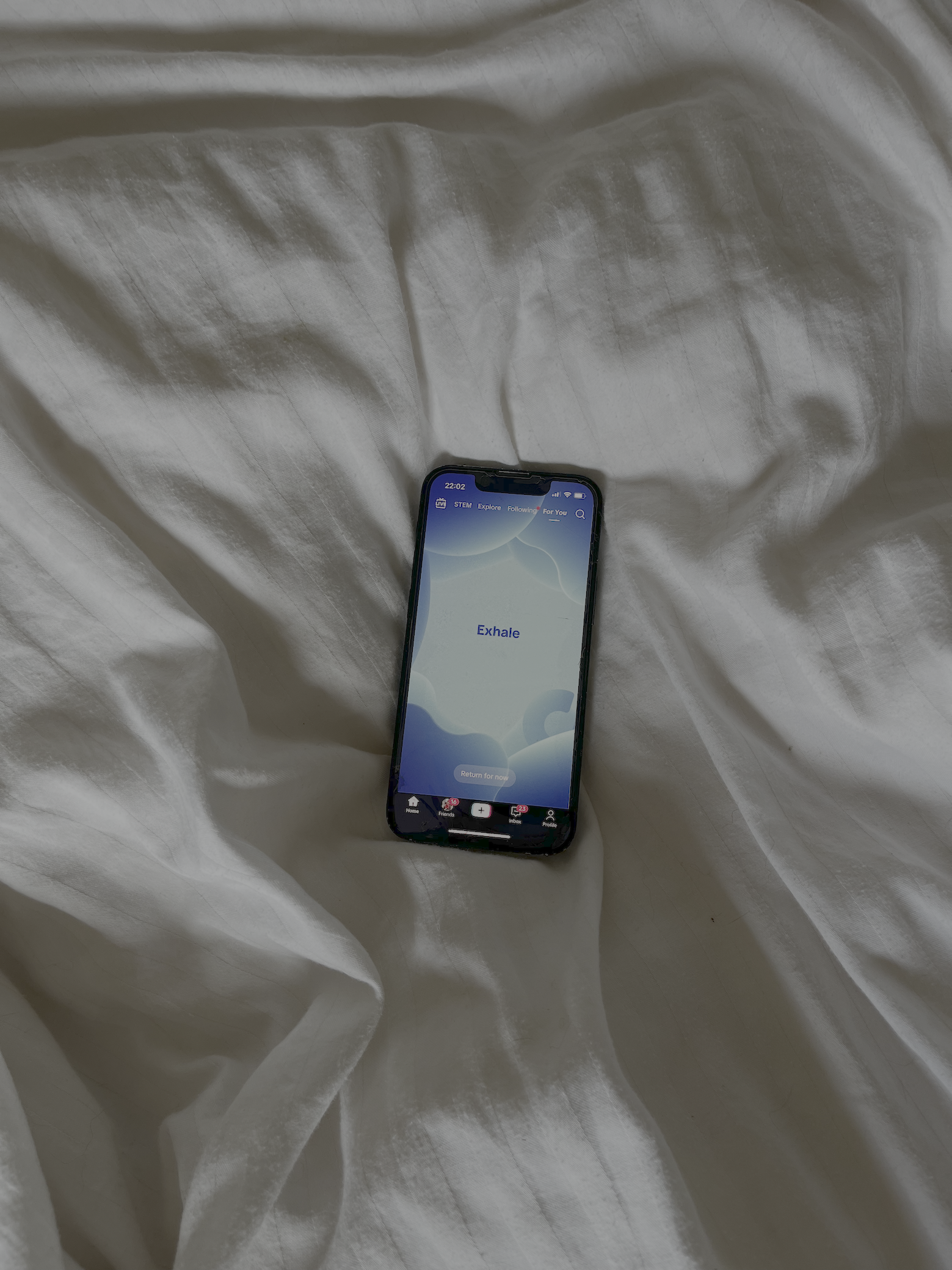
Health writer Ashleigh trying out TikTok's guided meditation for the first time
I’m tempted to throw in the towel after night one, convinced that TikTok’s meditations are next to useless. And yet, in the name of good journalism, I’m keen to give the app a fair trial, which means that I find myself on night two dutifully giving the breathwork another go.
Spoiler: nothing groundbreaking happens, but I do find myself reaching for my white noise playlist after the breathwork ends - a tool I haven’t switched on in months. I’d forgotten how effective it is at helping me to sleep through the night, and when I wake up the next morning, I realise I’ve had one of my best nights’ sleep in months.
On night three, I’m running late. By the time I’ve squeezed in a post-work class, a commute and dinner, I’m not in bed until 9:35 pm and have forgotten all about the trial... until I open TikTok and the blue bubble screen greets me again. There’s a small button at the bottom: “Return for now”, which essentially snoozes your mindfulness and allows you to continue scrolling. My finger hovers. The temptation to scroll is real. But then comes the guilt, and the knowledge that an hour lost to the For You Page won’t help me feel any less groggy tomorrow.
So, I follow the on-screen instructions. I take the deep, slow, steadying breaths. It only takes a few minutes of grounding to break the urge to scroll, and before I know it, I’m closing TikTok, switching on my white noise and settling down to sleep. I’m by no means saying it’s transformative, and had I not had previous experience using white noise, I perhaps wouldn’t be seeing results so quickly, but TikTok’s meditations have certainly sparked some kind of positive habit.
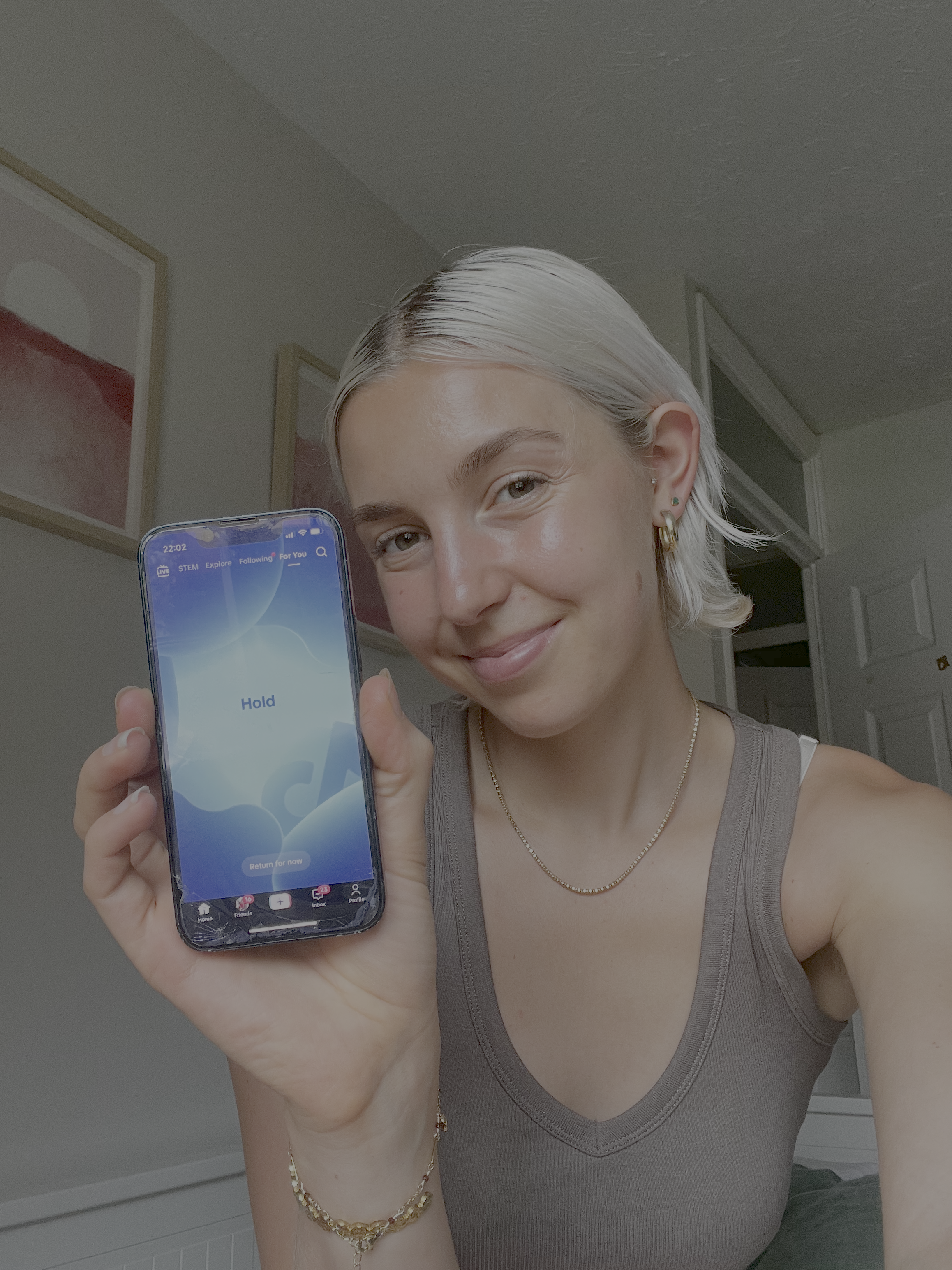
After a few days of practice, Ashleigh started to see the benefits of her meditation routine
Days four to seven
By day four, I’ve fully reconnected with my white noise playlist. It’s made a noticeable difference to the quality of my sleep, and I’m waking up feeling more rested.
Still, I find myself wanting something more than TikTok’s pared-back meditation. After finishing the nightly breathwork, I head to Spotify in search of something deeper and decide on a 10-minute bedtime breathwork practice by Jenny Haynes, my go-to yoga teacher. On one hand, the fact that I’m seeking something more could be taken as a sign that TikTok’s meditations miss the mark. But, then again, those breathwork prompts were the trigger I needed to interrupt my scroll and steer me toward something that actually helps.
By day six, my urge to consume content before bed has noticeably faded, and in fact, I don’t even open TikTok to do the breathwork. Instead, I head straight to something more immersive on Spotify. It really surprises me how quickly habits shift. There’s a common myth that it takes 21 days to cement a new habit (in reality, research shows that building real habits take more like 66 days) so I’m impressed by the fact that in just a few evenings of intentional practice, my brain has stopped craving the dopamine hit of late-night videos. The meditation helps me wind down properly, and I’m waking up less during the night, with a noticeable difference in how I feel the next morning.
So, what’s my verdict?
Well, when it comes to the meditations themselves, I’d say they’re pretty basic. If you’re a seasoned meditator or are expecting a calming voice and atmospheric sounds, you’ll be left disappointed. But despite my initial scathingness, I’ve come round to the fact that TikTok’s guided meditations aren’t entirely pointless.
You see, they have provided the nudge I needed to reconsider my screen habits and have reminded me of the value of a proper wind-down routine. Undeniably, it requires a bit of self-motivation to find something that really works, but as an entry point, TikTok’s feature has potential.
Would I recommend them? With caveats. If you're a chronic bedtime scroller and looking for an easy way to break the habit, they’re worth a go, but just don’t expect miracles. And maybe have a backup meditation app at the ready.
Shop MC UK’s soothing sleep environment essentials
Will guided meditation help me to fall asleep?
According to breathwork coach Steph Cabrera, the answer is absolutely. “Guided meditation, especially those which focus on slowing the breath, relaxing the body, and grounding into the present moment, can be great for helping you to fall asleep. These meditations help to quiet the mental chatter that often keeps people up at night.”
Meditation and breathwork facilitator, Jenny Haynes, concurs, adding that “Practices like Yoga Nidra” (also known as yogic sleep) “can be especially beneficial for putting the brain into a deeper state of rest, ready for bed.”
Cabrera reminds us, however, that the key to using meditation for better sleep is to be consistent. “Making guided meditation a regular part of a wind-down ritual is when you will see the real benefits show up,” she explains.

A former heptathlete, Ashleigh is a freelance journalist, specialising in women’s health, wellbeing and lifestyle, with words in Stylist, Cosmopolitan, Glamour and Marie Claire. She’s also the Co-Founder of Sunnie Runners, an inclusive London based run club.
